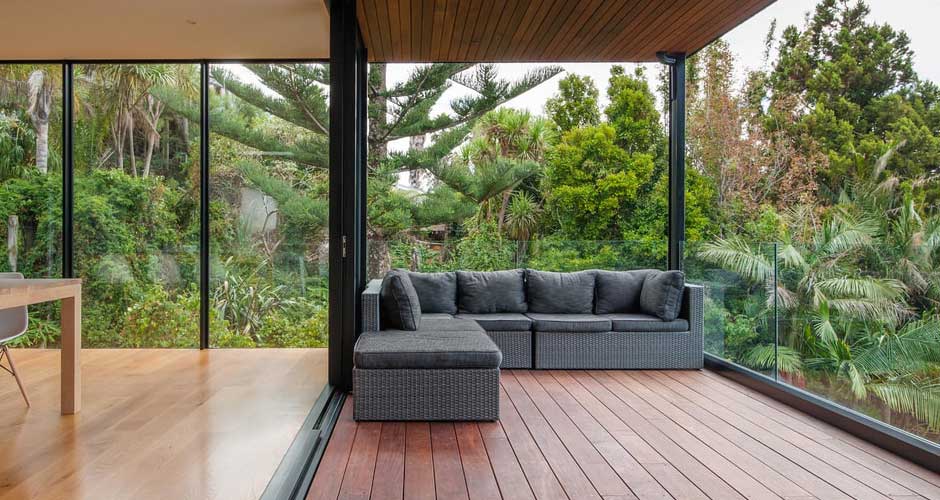In recent years, the concept of indoor-outdoor living has surged in popularity, with many homeowners looking to blend their indoor spaces with the great outdoors. Creating a seamless transition between your home and garden not only enhances your living area but also invites nature into your daily life. One of the most effective ways to achieve this harmonious flow is through decking. Let’s explore how decking can help you create that seamless connection, transforming your home into a beautifully integrated space.
The Concept of Indoor-Outdoor Living
Indoor-outdoor living is all about bringing the outside in and the inside out. It’s a design philosophy that allows for a natural flow between the two spaces, often blurring the lines between indoor comfort and outdoor beauty. With the rise of remote work and outdoor entertaining, more homeowners are embracing this lifestyle, which offers numerous benefits such as increased living space, enhanced natural light, and a more relaxed atmosphere. By incorporating decking into your design, you can create a versatile area that caters to your family’s needs, whether it’s for relaxation, entertaining guests, or enjoying family meals al fresco. For low-maintenance options, choose composite decking UK.
Decking as a Transitional Element
Decking serves as a fantastic transitional element between your home and garden, acting as a bridge that connects the two. The right choice of materials and design can significantly enhance this transition. For instance, composite decking provides a stylish, low-maintenance option that pairs beautifully with various home aesthetics. By selecting a decking style that complements your home’s architecture and interior decor, you can create a visually pleasing flow. Whether you opt for a natural wood finish or a sleek, modern composite look, decking can transform the way your indoor and outdoor spaces interact.
Design Tips for Creating a Seamless Flow
To achieve a seamless indoor-outdoor flow, consider aligning your indoor and outdoor flooring. Using the same material or colour palette for both spaces creates a cohesive look that visually connects the two areas. For example, if you have wooden flooring indoors, extending that theme onto your decking can tie everything together beautifully. Be sure to seal your deck to protect it from the elements, which will help maintain its look and durability. Additionally, incorporating features like steps or ramps can facilitate easy movement between the two spaces, enhancing accessibility. Consider installing bi-fold or sliding doors that open up completely, allowing for unobstructed views and access to your garden.
Maximising Space with Decking
Decking not only creates a smooth transition between indoors and outdoors but also maximises the usable space in your garden. It provides an ideal surface for outdoor dining areas, lounging spaces, or even a play area for children. To make the most of your decking, think about multi-functional features. Built-in seating or planters can add both beauty and practicality to your outdoor area, allowing you to accommodate various activities. With careful planning, your decking can become an extension of your living space, perfect for hosting barbecues or simply enjoying the sunshine.
Wooden Decking is Quick to Weather
The main reason why people debate between composite and wooden decking is the price. It’s easy to see why wood is such a popular material. It’s cheap and easy to get. However, it has some downsides that you must realise so that you don’t make the wrong investment in your property. Most people who do build wooden decking complain about how quickly it weathers and loses its natural appeal. Here are some things you need to know about wooden decking and how it’s not as durable as you might think.
The Winter Woes
The UK is a country that experiences all four seasons. In particular, the winter can be harsh. The nation is hit by dropping temperatures, snow and rain. Know that these are all elements that can impact wooden decking. For example, when you have decking in a shaded and damp part of your garden, you can expect to see algae growing. In fact, there can also be the presence of mould. So, what you can find is that your decking becomes dirty, dangerous to your health and green within a few months.
Summer Damage
The summer isn’t much better for your decking. In fact, this is the time of the year when wooden decking can change its colour and lose its natural appearance that people love. In particular, the UV Radiation from the sun can change the appearance of the wood, making it look grey. This can happen in as little as six months. Then, you’ll have to use a stain or paint to regain a better colour.
Year Round Degradation
Weather throughout the year in the UK can have a negative impact on wooden decking. For example, the country is notorious for a lot of rain. This and the change in temperature can cause the wood to crack and warp. Not only does this look bad, but it can also weaken the wood and mean that it’s not as strong as it used to be. Yes, you can use sealants from the beginning, which can protect the wood. But, this can be expensive over time.
Conclusion
Incorporating decking into your garden design is an excellent way to create a seamless indoor-outdoor flow that enhances your living space. With its versatility, low maintenance, and aesthetic appeal, decking acts as a bridge between your home and garden, allowing for effortless transitions. Whether you’re looking to expand your usable space, improve natural light, or simply enjoy the beauty of nature from the comfort of your home, decking is the perfect solution. So, if you’re considering a home improvement project, think about how decking can transform your outdoor area into a stunning extension of your indoor living space.
